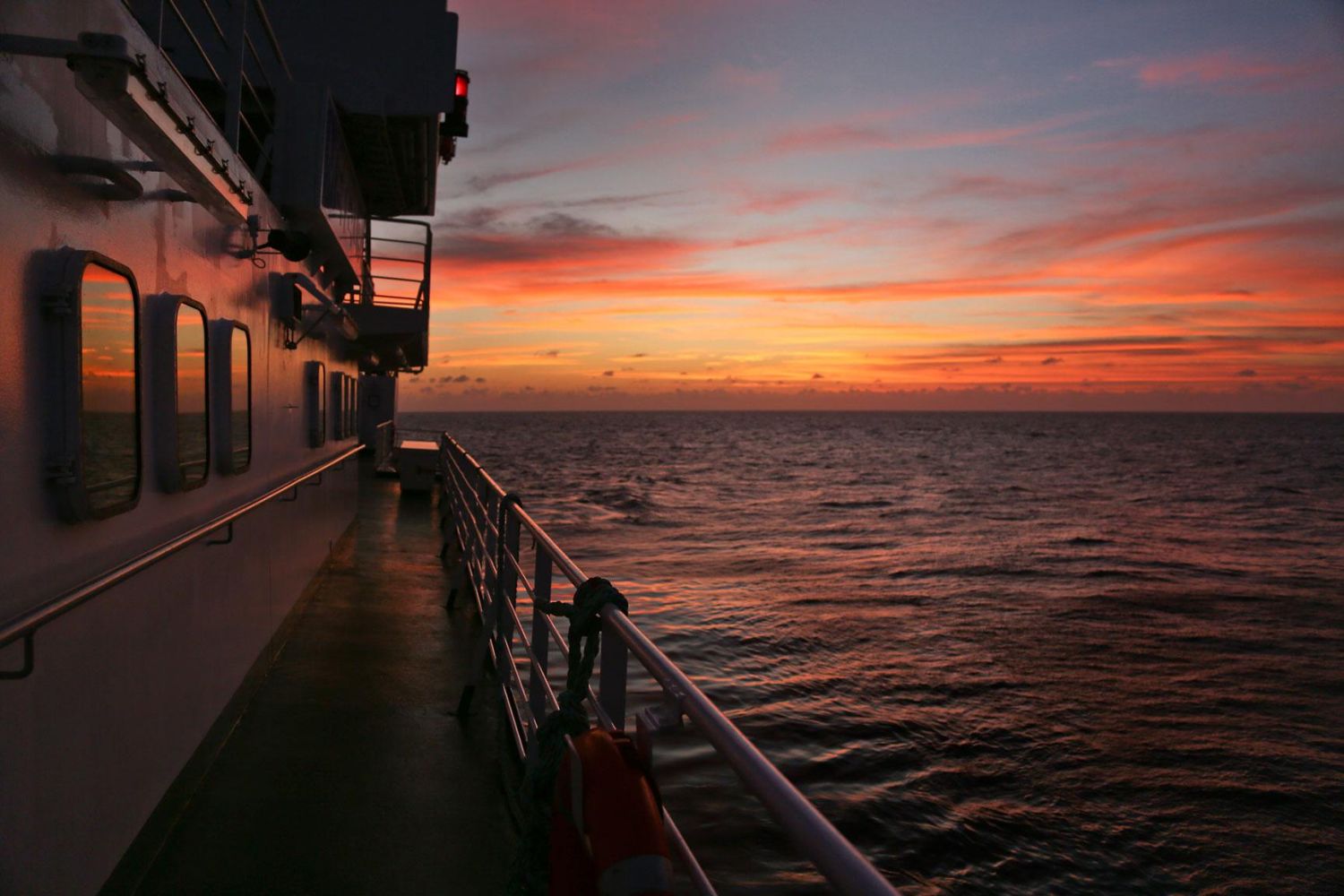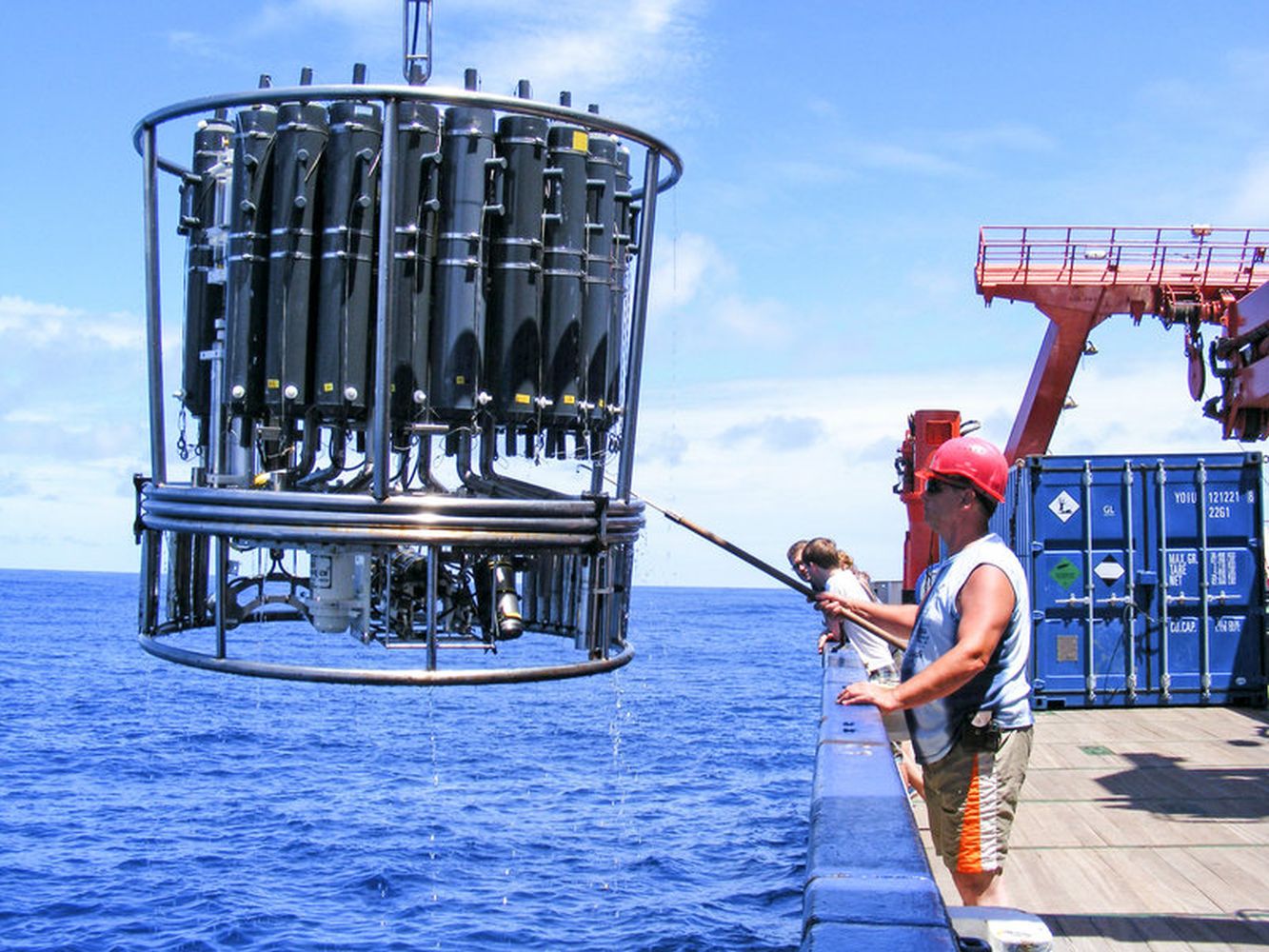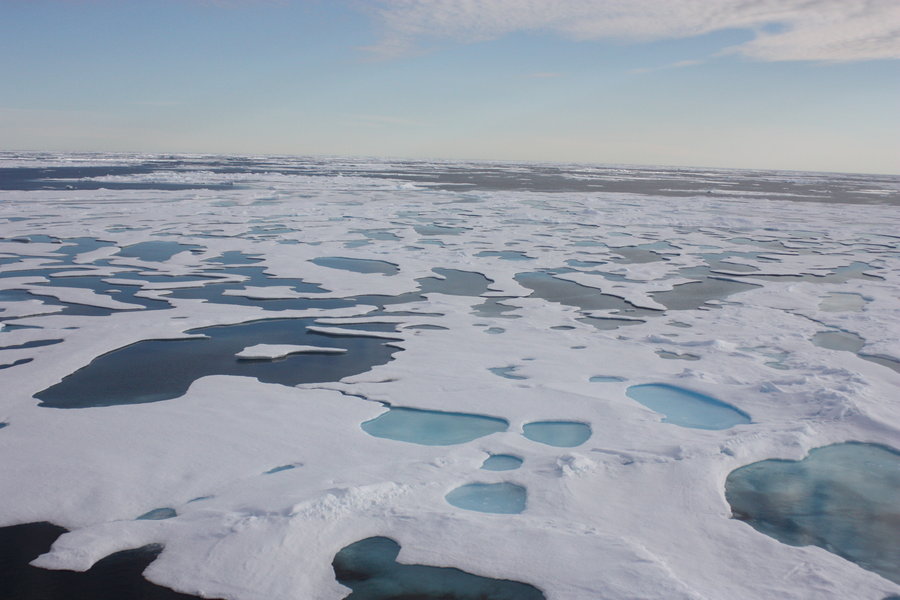Just like oxygen, nitrogen is of fundamental importance for life on Earth. Depending on the forms and compounds in which it occurs, it can promote life, but also limit it. In addition, some nitrogen compounds, such as nitrous oxide, are extremely effective greenhouse gases in the atmosphere. It is therefore important to understand the formation processes of various nitrogen compounds in nature and the factors that influence these processes.
Researchers at the GEOMAR Helmholtz Centre for Ocean Research Kiel have now succeeded for the first time in directly detecting an oceanic process that is fundamental to the nitrogen cycle, the so-called nitrification, by measuring the short-lived compound hydroxylamine. "This detection is otherwise only possible with very complex analyses in special onshore laboratories. With the new method, we were able to carry out the measurements on board," explains marine chemist Dr. Frederike Korth from GEOMAR. She is the lead author of the study, which has now been published in the international journal Geophysical Research Letters.
Hydroxylamine (NH2OH) is a compound of nitrogen with hydrogen and oxygen that decomposes very quickly if oxygen is present. "This is why there have been no measurements of hydroxylamine from the oceans so far," explains Prof. Dr. Hermann Bange from GEOMAR, head of the working group and co-author of the new study.
However, the chemists from Kiel, who are specialized in measurements in the ocean, were able to determine dissolved hydroxylamine in water samples from numerous stations during several expeditions of the German research vessels MARIA S. MERIAN and METEOR to the Pacific and Atlantic Oceans. "The compound can be a precursor of nitrous oxide in the nitrogen cycle, but only in the transformation process of nitrification," explains Korth. A comparison of nitrous oxide and hydroxylamine concentrations in ocean water therefore provides a relatively quick and simple indication of the occurrence of this process.
The method used was already known in theory, but there were still problems with chemical interferences. "For our study, we have now -for the first time- found a reliable way to determine hydroxylamine concentrations in seawater on board," says Professor Bange.
With this new method, there is now a comparatively simple and quick way to determine where nitrification takes place in the ocean - and ultimately where nitrous oxide can form in the ocean as a result of this process. "Of course, many more measurements are necessary in order to make global statements. But the simpler the analyses are, the more likely it is that we will receive the large amounts of data we need to assemble further pieces in the puzzle of the nitrogen cycle," emphasises Professor Bange.
Reference:
Korth, F., A. Kock, D. L. Arévalo-Martínez, H. W. Bange (2019), Hydroxylamine as a Potential Indicator of Nitrification in the Open Ocean. Geophysical Research Letters,
https://doi.org/10.1029/2018GL080466
Please note:
This study was funded by the Federal Ministry of Education and Research (BMBF) within the framework of the joint project SOPRAN ("Surface Ocean Processes in the Anthropocene") and by the German Research Foundation(DFG) within the framework of the Collaborative Research Centre 754 "Climate-Biogeochemical Interactions in the Tropical Ocean".
Contact:
Jan Steffen (GEOMAR, Kommunikation & Medien), Tel.: 0431 600-2811
presse@geomar.de
…



